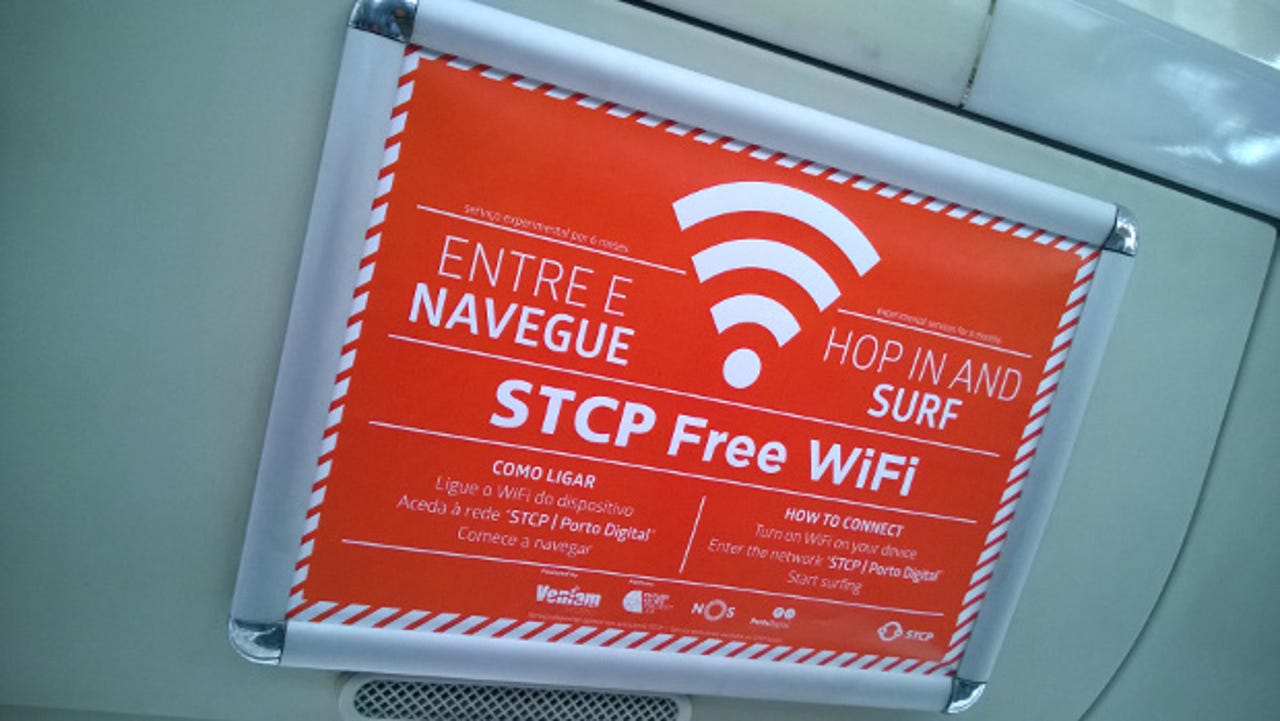Free wi-fi? Mesh networking? Bins that talk? Porto project shows it's a load of garbage


That could well be the case with an experiment running in the Portugese city of Porto, where a startup called Veniam has been working together with the local government to turn buses, taxis, garbage trucks, and other vehicles into moving wi-fi hotspots.
Almost all of the buses belonging to the public fleet of the SCTP (Sociedade de Transportes Colectivos do Porto), the mass transportation authority of the city, have already been equipped in the past months with Veniam's technology, which consists of a small device, a box called the Net Rider, and software which optimizes the flow of data from one node to the other and from there to internet infrastucture.
"This little box has several different interfaces, so it's able to connect not only to the cellular network, but also to other vehicles, to existing wi-fi hot spots, and to special Veniam access points that have ten times the range of standard wi-fi and are able to establish connections in a few milliseconds," University of Porto professor and Veniam co-founder João Barros told ZDNet. Barros founded the startup with Susana Sargento of the University of Aveiro, and Zipcar's Robin Chase and Roy Russell.
Once the vehicles have a NetRider box onboard, they form part of a mesh network - a network whose nodes all cooperate to distribute data between them. Mesh networks can expand wireless coverage by working as a wi-fi hotspot for passengers, and also gather huge amounts of data from the physical world and take it to the cloud using the vehicles as mobile sensors.
"The public bus company is using data provided by the Veniam network to decide where to put bus stops, where to put bus lanes, how to time the traffic lights. All of this is only possible if you know the speed and the position of all the buses with high granularity. That means, on a second by second basis," Barros says.
This kind of 'urban scanner' is used for a variety of purposes: from spotting potholes in the streets to having vehicles communicate with garbage bins. In the latter scenario, litter bins are equipped with sensors that tell vehicles whether they are full or not, and this information is then stored in the cloud and made available to the waste management company, which can decide on the fly how to optimize its garbage collection schedule.
Further applications could be monitoring air quality, noise pollution levels, or CO2 emissions, thanks to the speed and pervasiveness of the mesh network. The Internet of Things, long awaited but seldom put into practice, could finally become a reality with this system, as far as urban infrastructure is concerned.
The most noticeable effect of the technology being adopted in Porto so far is, however, the supply of free internet connectivity to the passengers of SCTP's buses, something which, besides representing cost savings, also increases the attractiveness of public transportation for young people and tourists, who are more likely to take public buses if they can be connected while traveling.
As of December last year 80,000 people were using the service, which can be accessed without needing any password or login.
In the harbor, the company deployed a vehicular mesh network that connects all 25 container-carrying trucks to each other and to the optical backbone of the port administration, improving, thanks to its hardware and software, the quality of connectivity in the port area, where the cellular signal usually does not propagate well - because of the metal containers - and the range of traditional wi-fi is too small.
Now Veniam, which was first incubated by UPTEC, the University of Porto's Science and Technology Park, is looking to expand overseas. Last August, it set its headquarters in Silicon Valley and in December it secured $4.9m in funding from True Ventures and other US investors.
The company wants to use the money to grow its Mountain View office and accelerate deployment of vehicular networks in US cities. "We've realized that also in the United States, there's a great desire to have wi-fi in transportation. Also, many cities are looking to use high granularity data to make decisions and improve the quality of life of cities and citizens," Barros said.
But the idea of an 'Internet of Moving Things', which provides free connectivity to citizens, could also prove appealing in many areas of the developing world, where there's an enormous desire for internet access, and people don't have the resources to pay for very expensive cellular data plans.
As for Veniam's business model, Barros, who, aside from teaching at Porto University is also former national director of the Carnegie Mellon Portugal Program and a visiting professor at Stanford, says it's based on a setup fee needed to equip the fleet, followed by a monthly fee per vehicle, which allows the company to offer the customers a turnkey solution.
Read more on networking